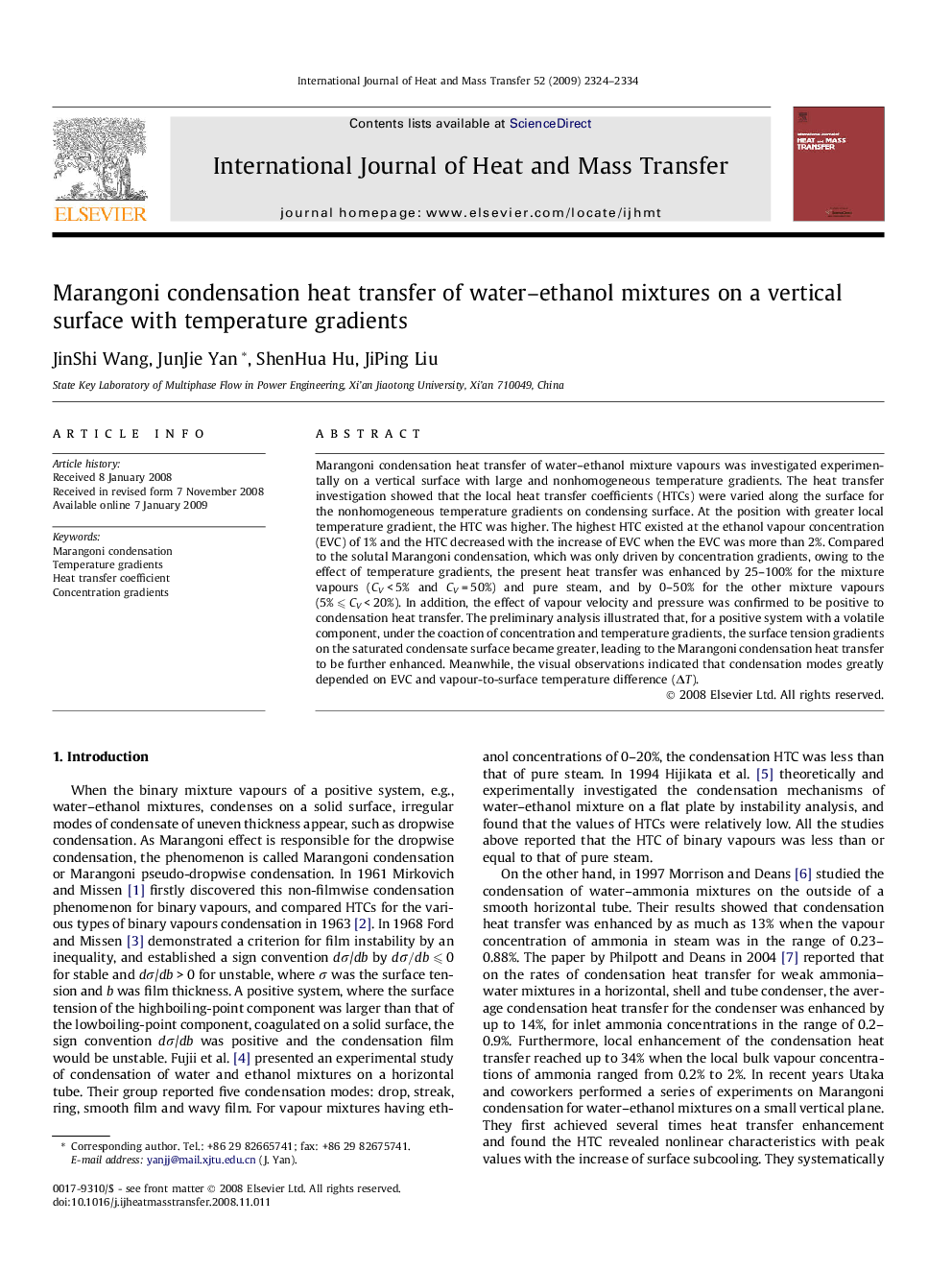| Article ID | Journal | Published Year | Pages | File Type |
|---|---|---|---|---|
| 660302 | International Journal of Heat and Mass Transfer | 2009 | 11 Pages |
Marangoni condensation heat transfer of water–ethanol mixture vapours was investigated experimentally on a vertical surface with large and nonhomogeneous temperature gradients. The heat transfer investigation showed that the local heat transfer coefficients (HTCs) were varied along the surface for the nonhomogeneous temperature gradients on condensing surface. At the position with greater local temperature gradient, the HTC was higher. The highest HTC existed at the ethanol vapour concentration (EVC) of 1% and the HTC decreased with the increase of EVC when the EVC was more than 2%. Compared to the solutal Marangoni condensation, which was only driven by concentration gradients, owing to the effect of temperature gradients, the present heat transfer was enhanced by 25–100% for the mixture vapours (CV < 5% and CV = 50%) and pure steam, and by 0–50% for the other mixture vapours (5% ⩽⩽ CV < 20%). In addition, the effect of vapour velocity and pressure was confirmed to be positive to condensation heat transfer. The preliminary analysis illustrated that, for a positive system with a volatile component, under the coaction of concentration and temperature gradients, the surface tension gradients on the saturated condensate surface became greater, leading to the Marangoni condensation heat transfer to be further enhanced. Meanwhile, the visual observations indicated that condensation modes greatly depended on EVC and vapour-to-surface temperature difference (ΔT).
